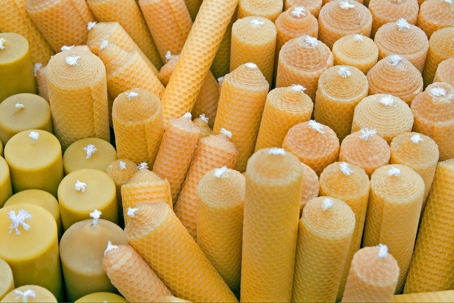Who doesn’t love the smell of fresh baked cookies, an ocean breeze or a dense pine forest? It’s amazing how candlemakers can replicate these aromas with artificial fragrances. However, filling your home with these scents may not be doing your indoor air quality any favors.
Warning: Wicks, Wax, Synthetics and Dyes
While scented candles smell great, you could be breathing in much more than simulated sandalwood. We’re going to break down how the ingredients in scented candles could impact your health and suggest safer alternatives.
Wick
Most wicks manufactured in the U.S. are made of cotton or a paper-cotton combination. That sounds harmless, but you need to pay careful consideration to the core of the wick. Have you ever tried to light a limp wick? It’s not easy. That’s why some manufacturers braid cotton/paper around a tin or zinc core to prop it up. This is most commonly the case with scented candles. The chemicals used to make those pleasing aromas soften the wax, which causes the wick to droop, necessitating the need for a rigid material.
The National Candle Association maintains that scientific studies have proven zinc and tin wick to be safe. But why release trace amounts of heavy metals into the air when you don’t have to?
Alternatives: Look for candles with a wick core of cotton or paper as safer bets.
Wax
Paraffin is a petroleum byproduct which is bleached, deodorized and made into candle wax. The problem with it being a petroleum byproduct is that it can release volatile organic compounds (VOCs) into the air. The VOCs can include carcinogens such as benzene, acetone and toluene. These compounds have been linked to allergies, asthma and cancer. Plus, paraffin consists of some of the same toxins found in diesel fuel.
You don’t even need to light the candle to risk your health. One study found that some scented candles emitted volatiles before the flame even touched the wick.
There is also the problem of soot. Soot can aggravate existing conditions such as asthma, lung or heart problems.
Alternatives: Candles made of 100% beeswax boast medicinal properties to reduce allergies, hay fever and asthma. Likewise, soy candles are a natural alternative that burn clean. Both options are a little pricier than their paraffin counterparts, but you get more bang for your buck because they burn slower, therefore longer. Other alternative waxes include coconut, vegetable oils and rice.
Fragrances
No, that’s not natural pine you’re smelling when you light the wick. Fragrances are manufactured with synthetics and dyes that emit VOCs such as formaldehyde. People who are sensitive to these chemicals could experience dizziness, headaches and respiratory problems, among other side effects.
Alternatives:Many candlemakers do not disclose the ingredients used in fragrances. This is true of even the more natural alternatives, such as soy, which can still contain synthetics and dyes. Fortunately, makers of nontoxic candles typically display ingredients on the label, so you know exactly what you’re burning. Plus, you can find many of your favorite scents such as vanilla, chamomile, lavender, cedar and ginger made with natural ingredients. Also, consider 100% beeswax candles. These fill your home with the naturally sweet scent of honey.
Or forego candles entirely
There are other ways to add pleasing aromas, such as potpourri. No wicks. No wax. Just the pleasant smell of flowers, herbs, leaves, oils and other natural ingredients. Plus, you can easily make potpourri yourself, so you can be certain it contains nothing you wouldn’t want to breathe in.

